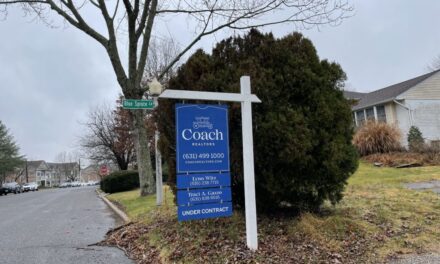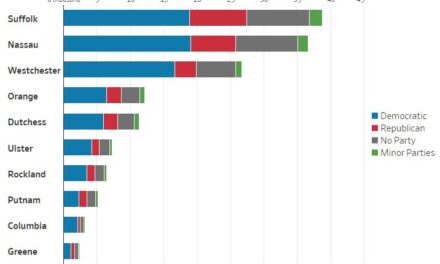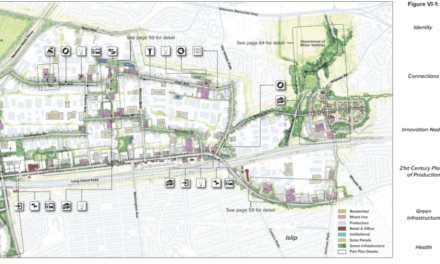The following are quick hits of editorial analysis from The Foggiest Idea on the local and regional developmental issues that matter. For more, be sure to LIKE TFI on Facebook.
By Richard Murdocco – published April 12, 2021
As part of the recently approved $212 billion New York state budget plan, elected officials voted to raise the tax rates on top earners and corporations. Now, top earners in New York City are being charged the highest combined tax rate in the nation – a fact that experts say will drive away the businesses and wealthy individuals that both the state and city rely upon to fund essential public services.
Overall, the budget raised state spending by $18 billion, or by roughly 10%, with increases going towards local schools, the expansion of prekindergarten programs, rent relief, and more.
“Higher personal income tax rates on high-income taxpayers will likely increase the volatility of personal income tax collections, and will make combined state and local rates for New York City high-income earners the highest in the nation. Effects on the recovery of New York City and on the state and city budgets must be monitored closely,” New York State Comptroller Tom DiNapoli said in a statement a few days after the budget was approved by the members of the Democrat-controlled state Assembly and Senate. “While much of the new resources may be temporary and necessary to meet current needs, it is important that spending not grow to unsustainable levels.”
Along with the tax hikes on the wealthy, the state also used the budget process to legalize both the sale of recreational marijuana and mobile sports betting. The tax moves come as New York’s capital flight risk, or the mass departure of money and assets from a region, has further grown in recent years.
According to census data, New York held the dubious distinction of being the no. 1 state for population loss in the U.S. from July 2019 to July 2020. And more than 300,000 New York City households in higher-income neighborhoods filed change-of-address forms with the U.S. Postal Service from March to October last year. In a recent count by Forbes that tracked which U.S. states billionaires called home, New York ranked second in the country. Within the state, the wealthiest 2% of taxpayers provide about half of the New York’s overall income tax revenue.
With the latest tax increases, wealthy individuals are feeling the pressure to move to more financially friendly areas.
Joint filers in New York who report income between $2.2 million to $5 million will see their state income-tax rate rise from 8.82% to 9.65%. Singles will hit those rates after reporting more than about $1.1 million. Filers of any type who report more than $5 million in income up to $25 million will see their state income taxes raise 10.3%. Those who report beyond $25 million in income now face a rate of 10.9%.
When combined with New York City’s top income tax of 3.88%, the city’s highest earners would be taxed at a top combined state and city income-tax rate of 14.8%, surpassing California’s top income-tax rates of 13.3%.
New Yorkers with high incomes have long fled to areas such as Florida, Texas, and Nevada – all of whom don’t have income or estate taxes. Since the pandemic ushered in an embrace of remote work from corporate America, fiscal experts fear that the latest increases could push even more to leave, especially as municipalities within the lower-tax locales have stepped up their lobbying efforts to convince New York-based firms to relocate.
The loss of wealthy individuals and businesses can further compound the economic damage brought about by the pandemic. This could prove devastating in areas such as New York City, where public coffers in the last year were hit especially hard.
The city comptroller’s office is forecasting more than a $4 billion budgetary shortfall in the coming years, and property values fell on average of 14% across the hotel, retail, office, and multifamily sectors. Residential and commercial property generated about half of the city’s tax revenue in fiscal 2019, and the diminished values resulted the largest decline in property tax receipts since 1996.
TRANSIT EXPERTS TO NEWSDAY – LIRR RIDERSHIP MAY NEVER FULLY REBOUND FROM PANDEMIC LOWS
The Long Island Rail Road has been fundamentally transformed in the wake of the coronavirus pandemic – and many of the service changes riders have experienced throughout the last year are likely here to stay, experts recently told Newsday‘s Alfonso Castillo.
Currently, the LIRR’s weekday ridership is down by roughly 73%, with overall train service running around 80% that of pre-pandemic levels. In 2019, the railroad carried a record 91.1 million passengers, generating $771 million in ticket sales. The LIRR at the time ran 740 trains per day.
Experts say that various factors cloud the railroad’s chances for a full recovery in ridership, including public fears of using mass transit during a pandemic, employees choosing to work from home instead of facing a lengthy commute, and the unpredictable nature of the MTA’s finances.
“What part of the conditions that are present because of the pandemic will remain? And, to what extent did the pandemic accelerate trends that were in the works ahead of time?” Jon Carnegie, executive director of the Alan M. Voorhees Transportation Center at Rutgers University, told Newsday. “The relationship we all have with work in the office is going to change, and probably will change, at some level, permanently,” Carnegie added.
Despite the challenges, the MTA is moving full-speed ahead on capacity building projects such as East Side Access, which will bring the LIRR into Grand Central Terminal, and the LIRR Third Track, which adds additional track capacity on the 9.8 mile stretch of rail between Floral Park and Hicksville.
As federal money was being allocated to help the MTA as part of the third federal coronavirus relief bill, the railroad further trimmed service levels. The move led to dangerously packed trains systemwide, enraging commuters, advocates, and politicians – including Senate Majority Leader Chuck Schumer (D-N.Y.), who worked to secure the COVID-19 related funding.
“I have 14.5 billion reasons the LIRR service cuts make no sense,” Schumer said during an unrelated press conference in Babylon when the cuts were first enacted. “So the MTA needs to go back, look at their decision, knowing … there’s billions more in federal relief that are in transit to the MTA.” The service cuts were promptly reversed a mere day after they took effect.
Overall, the MTA has received three separate federal bailouts to offset revenue losses, totaling about $14.5 billion.














